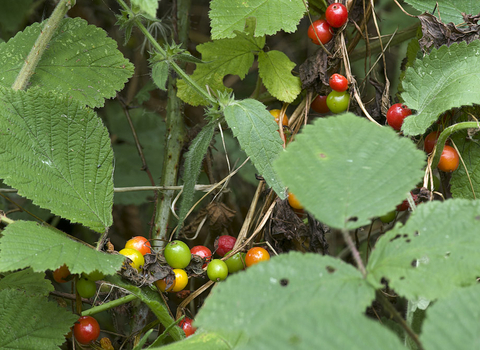
©northeastwildlife.co.uk
Black bryony
A climbing plant of hedgerows and woodlands, Black bryony produces greenish flowers in summer and red, shiny berries in autumn. It is a poisonous plant.
Scientific name
Tamus communisWhen to see
May to NovemberSpecies information
Category
Statistics
Height: up to 3mCommon.
